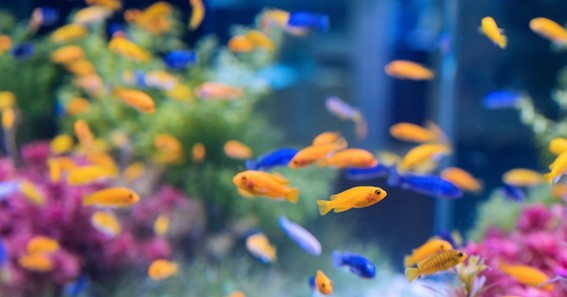Welcome to the complex and diverse world of aquarium algae cleaning tools! As a fish tank enthusiast, you know that algae growth is an unavoidable part of owning an aquarium. These organisms can quickly take over your tank if left unchecked, and having the right tools to keep it under control is essential.
In this guide, we will discuss some of the most popular aquarium algae cleaning tools, their functions, and how they can help keep your tank looking its best.
Types of Algae
Algae are a diverse group of aquatic organisms that range from single-celled microorganisms to complex multicellular forms. They can be found in nearly all aquatic habitats, from marshes and ponds to the deep ocean. Algae provide food for many aquatic creatures, help maintain oxygen levels in the water, and form the basis of most aquatic food webs. There are three major categories of algae: green algae, red algae, and brown algae.
Green Algae
Green algae are generally single-celled or simple multicellular organisms that inhabit freshwater environments such as ponds or lakes. They use photosynthesis to create their own food energy from sunlight, carbon dioxide, and water in a process known as photosynthesis. Green algae are typically filamentous or unicellular forms but can also take on more complex shapes such as colonies or branched networks called filaments. Some green algae species have been used in various industries such as bioremediation (cleaning contaminated water) and biofuel production due to their ability to produce energy using only sunlight.
Click here – Orthodontics Boost Your Self-Esteem in Sydney
Red Algae
Red algae is a type of seaweed found mostly in shallow marine waters around the world including coral reefs and estuaries. It is characterized by its distinctive red or purplish colour due to the presence of pigments called phycoerythrins. Red algae are generally multicellular and have a more complex structure than green algae. They can be found in a wide range of forms, including thin sheets, filaments, and branching patterns. Some red algae species are used in various applications such as food, cosmetics, and medicine.
Brown Algae
Brown algae, also known as kelp, is a type of seaweed found in cool, shallow waters around the world. They are characterized by their brown or olive-green colour and have a complex multicellular structure that can grow up to several meters in length. Brown algae are commonly used in various industries such as food, cosmetics, and bioremediation due to their high nutrient content.
Causes of Algae Growth in Aquariums
Algae growth in aquariums is a common problem, and it can be extremely difficult to control. Algae are a type of aquatic plant, and they thrive in warm water with plenty of light. While algae are natural and not necessarily harmful to your aquarium fish, excessive amounts can create an unsightly mess and consume resources that your fish need for survival. Fortunately, there are steps you can take to reduce the amount of algae growth in your tank.
The most common cause of algae growth is too much light exposure. Algae require sunlight or artificial lighting for photosynthesis, so tanks that get too much light will have more abundant algae growth. You should adjust the lights on your aquarium so that it only receives 8-10 hours of direct light per day – any longer than this will likely lead to excess algae production. Additionally, you should avoid placing your tank near bright windows or other sources of natural light as these can contribute significantly to excessive lighting conditions in the tank.
Another major contributor to increased levels of aquatic plants such as algae is high levels of nutrients like nitrates and phosphates present in the water column or substrate materials within the aquarium environment.
Click here – The Essential Role of Physiotherapy in Pain Management
Conclusion
Managing algae growth in your aquarium is an essential part of maintaining a healthy and attractive environment for your fish and other aquatic creatures. Understanding the types of algae and the factors that contribute to their growth is important in selecting the right tools for the job. There are various cleaning tools available on the market, each with its own advantages and disadvantages, so it is crucial to choose the right tool based on your tank size and the type of algae you are dealing with. With regular maintenance and proper cleaning techniques, you can keep your aquarium free from excessive algae growth, resulting in a beautiful and healthy aquatic habitat for your pets.






